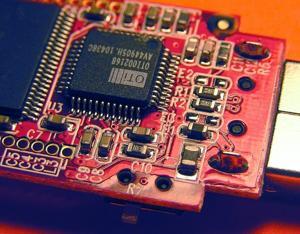Content Menu
>> Understanding Surface Mount Devices
>>> Key Features of Surface Mount Devices
>> The Advantages of Using Surface Mount Devices
>> Applications of Surface Mount Devices
>> The Manufacturing Process of Surface Mount Devices
>>> 1. PCB Preparation
>>> 2. Solder Paste Printing
>>> 3. Component Placement
>>> 4. Reflow Soldering
>>> 5. Inspection
>> Challenges in Using Surface Mount Devices
>> Future Trends in Surface Mount Device Technology
>> Frequently Asked Questions (FAQs)
>> Conclusion
Understanding Surface Mount Devices
Surface Mount Devices (SMDs) are electronic components designed to be mounted directly onto the surface of a printed circuit board (PCB). Unlike traditional through-hole components, which require holes to be drilled into the PCB for mounting, SMDs utilize solder pads on the board's surface. This leads to several advantages, including reduced size and weight, improved performance, and enhanced manufacturing efficiency.
Key Features of Surface Mount Devices
- Compact Size: SMDs are typically smaller than their through-hole counterparts, allowing for more components to fit on a single PCB.
- Lightweight: The absence of leads that extend through the board reduces the overall weight of devices.
- Automated Assembly: SMDs can be easily handled by automated pick-and-place machines, streamlining the manufacturing process.
The Advantages of Using Surface Mount Devices
The adoption of SMD technology offers numerous benefits to manufacturers and designers alike:
1. Space Efficiency: The smaller size of SMDs allows for higher component density on PCBs, enabling the design of more compact electronic devices.
2. Enhanced Performance: SMDs often exhibit better electrical performance due to shorter lead lengths, which reduce inductance and resistance.
3. Cost-Effectiveness: The ability to automate assembly processes with SMDs can significantly lower labor costs and production times.
Applications of Surface Mount Devices
SMDs are used in a wide range of applications across various industries:
- Consumer Electronics: Smartphones, tablets, and laptops utilize SMD technology for compact designs and high functionality.
- Automotive Electronics: Modern vehicles incorporate numerous SMDs for features such as advanced driver-assistance systems (ADAS) and infotainment systems.
- Medical Devices: Compact medical equipment relies on SMDs to fit complex circuitry into small enclosures.
The Manufacturing Process of Surface Mount Devices
The manufacturing process for assembling SMDs involves several key stages:
1. PCB Preparation
Before SMDs can be mounted, the PCB must be prepared. This includes designing the layout with appropriate solder pads for each component and ensuring that the board is free from contaminants.
2. Solder Paste Printing
Solder paste is applied to the PCB using a stencil printer. This paste consists of tiny metal particles mixed with a flux that helps solder adhere during the reflow process. Proper application is critical; too much or too little paste can lead to connection failures.
Solder Paste Printing
3. Component Placement
Once solder paste is applied, a pick-and-place machine accurately places SMDs onto their designated pads on the PCB. These machines can place thousands of components per hour, significantly speeding up production.
Pick-and-Place Machine
4. Reflow Soldering
After placement, the PCB is passed through a reflow oven where it undergoes heating cycles that melt the solder paste, creating a strong bond between the component leads and solder pads.
Reflow Oven
5. Inspection
Post-soldering inspection ensures that all components are correctly placed and soldered. Automated Optical Inspection (AOI) systems are commonly used in this stage.
Automated Optical Inspection

Challenges in Using Surface Mount Devices
Despite their advantages, there are challenges associated with SMD technology:
- Thermal Management: Due to their compact nature, managing heat dissipation in devices with many SMDs can be difficult.
- Repairability: Repairing or replacing faulty SMDs can be more challenging than through-hole components due to their small size and placement.
Future Trends in Surface Mount Device Technology
As technology advances, several trends are emerging in the realm of surface mount devices:
1. Integration with IoT: As Internet of Things (IoT) devices proliferate, smaller and more efficient SMDs will be essential for smart applications.
2. Advanced Materials: Research into new materials for both components and PCBs aims to improve performance while reducing environmental impact.
3. 3D Packaging: Innovations in packaging technologies allow for even denser arrangements of components on PCBs.
Frequently Asked Questions (FAQs)
1. What is a surface mount device?
- A surface mount device (SMD) is an electronic component designed to be mounted directly onto the surface of a PCB without needing holes drilled into it.
2. What are the benefits of using SMDs?
- Benefits include space efficiency, lighter weight, improved electrical performance, and cost-effectiveness due to automation.
3. How does the assembly process for SMDs work?
- The assembly process involves preparing the PCB, applying solder paste, placing components using pick-and-place machines, reflow soldering them onto the board, and inspecting for quality.
4. Are there any disadvantages to using surface mount technology?
- Challenges include thermal management issues and difficulties in repairing or replacing small components.
5. What industries commonly use surface mount devices?
- Industries include consumer electronics, automotive electronics, telecommunications, and medical devices.
Conclusion
In conclusion, surface mount devices have transformed electronics manufacturing by enabling smaller, lighter, and more efficient designs while facilitating automated assembly processes. As technology continues to advance, the role of SMDs will only become more prominent in shaping future electronic innovations.


















